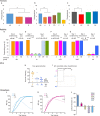Biological constraints on configural odour mixture perception
- PMID: 35285471
- PMCID: PMC8996812
- DOI: 10.1242/jeb.242274
Biological constraints on configural odour mixture perception
Abstract
Animals, including humans, detect odours and use this information to behave efficiently in the environment. Frequently, odours consist of complex mixtures of odorants rather than single odorants, and mixtures are often perceived as configural wholes, i.e. as odour objects (e.g. food, partners). The biological rules governing this 'configural perception' (as opposed to the elemental perception of mixtures through their components) remain weakly understood. Here, we first review examples of configural mixture processing in diverse species involving species-specific biological signals. Then, we present the original hypothesis that at least certain mixtures can be processed configurally across species. Indeed, experiments conducted in human adults, newborn rabbits and, more recently, in rodents and honeybees show that these species process some mixtures in a remarkably similar fashion. Strikingly, a mixture AB (A, ethyl isobutyrate; B, ethyl maltol) induces configural processing in humans, who perceive a mixture odour quality (pineapple) distinct from the component qualities (A, strawberry; B, caramel). The same mixture is weakly configurally processed in rabbit neonates, which perceive a particular odour for the mixture in addition to the component odours. Mice and honeybees also perceive the AB mixture configurally, as they respond differently to the mixture compared with its components. Based on these results and others, including neurophysiological approaches, we propose that certain mixtures are convergently perceived across various species of vertebrates/invertebrates, possibly as a result of a similar anatomical organization of their olfactory systems and the common necessity to simplify the environment's chemical complexity in order to display adaptive behaviours.
Keywords: Comparative olfaction; Elemental perception; Invertebrates; Odour object; Odour-guided behaviour; Vertebrates.
© 2022. Published by The Company of Biologists Ltd.
Conflict of interest statement
Competing interests The authors declare no competing or financial interests.
Figures

References
-
- Ache, B. W., Gleeson, R. A. and Thompson, H. A. (1988). Mechanisms for mixture suppression in olfactory receptors of the spiny lobster. Chem. Senses 13, 425-434. 10.1093/chemse/13.3.425 - DOI
-
- Akers, R. P. and Getz, W. M. (1993). Response of olfactory receptor neurons in honeybees to odorants and their binary mixtures. J. Comp. Physiol. A 173, 169-185. 10.1007/BF00192976 - DOI
Publication types
MeSH terms
Grants and funding
LinkOut - more resources
Full Text Sources

